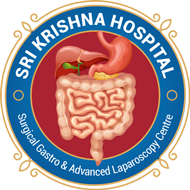What is Laparoscopic Hernia repair?
Laparoscopic (minimally invasive) hernia repair uses a laparoscope, a thin, telescope-like instrument that is inserted through a small incision at the umbilicus (belly button)
Why Laparoscopic Hernia Repair is done?
Surgical repair is recommended for inguinal hernias that are causing pain or other symptoms. It's also recommended for hernias that are incarcerated or strangulated. Surgery is always recommended for inguinal hernias in children.
How Laparoscopic Hernia Repair is done ?
The laparoscope is connected to a tiny video camera that projects an "inside view" of your body onto television screens in the operating room.
The abdomen is inflated with a harmless gas (carbon dioxide), which creates space to allow your doctor to view your internal structures. The peritoneum (the inner lining of the abdomen) is cut to expose the weakness in the abdominal wall. Mesh is placed on the inside to cover the defects in the abdominal wall and strengthen the tissue. After the procedure is completed, the small abdominal incisions are closed with a stitch or two or with surgical tape. Within a few months, the incisions are barely visible.
Benefits of laparoscopic hernia surgery include three tiny scars rather than one larger incision, less pain after surgery, a quicker return to work and a shorter recovery time (days instead of weeks).
Post operative recovery
The patient can go home 24 hours after surgery. He/ she can rrsume to normal activities with in a week.
Advantages of laproscopicHernia Repair
Laparoscopic surgery has the following advantages
- Less pain and early return to work
- Shorter hospital stay
- Repair of a recurrent hernia often is easier using laparoscopic techniques
- It is possible to check for and repair a second hernia on the opposite side at the time of the operation.





